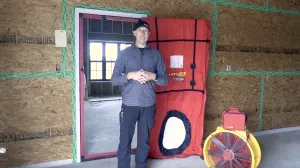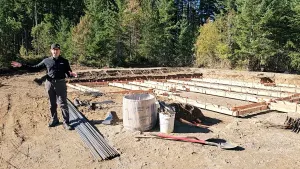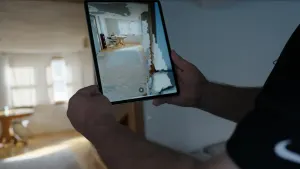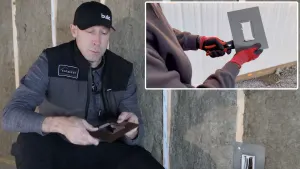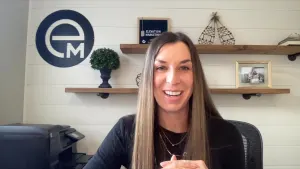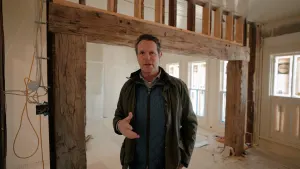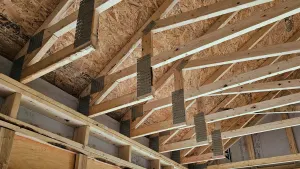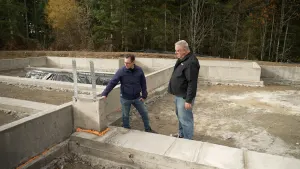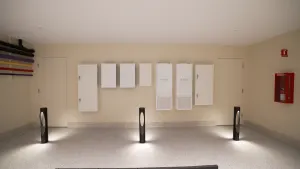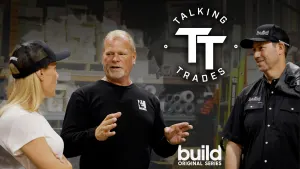Plumbing is a huge topic and isn’t easy to cover in one blog post but here’s a few rookie mistakes that I’m seeing in the field.
Mistake #1 – Cheap Plumbing Materials & Fixtures
The materials your plumber uses can make a big difference in the final quality of your homes. Rookie builders don’t pay much attention to the finer details of what the plumber is installing.
For instance: I use all 1/4 Turn Ball Stop Brass Shut off valves for my houses (I like the KT Series from BrassCraft). These will last for decades and be leak free in 30+ years when you need to turn them off! They run about $11-15 each.

If you are taking the lowest bid on your plumbing (and you’re not specifying) you’re going to get these cheapie shut off valves that run about $3-5 each. In my remodel experiences, I’ve seen these fail in under 15 years of service quite often.

I also think this holds true to the plumbing fixtures themselves. I’ve found that the cost of the fixture directly relates to the quality and longevity of it’s service life. I don’t want to bash any plumbing brands, but if you buy quality fixtures from Kohler, Grohe, or Toto you’ll get the quality that comes with the higher price tag. The less expensive brands seem to have issues inside of 10 years. Rookie builders buy based on price, experienced builders will pay for the quality.
Mistake #2 – Plumbing Penetrations
The plumbers are your #1 hole-maker in a house. They arrive onsite at the “Top-Out” stage (where the house is framed and they run the pipes inside the walls pre-sheetrock) and start drilling. I’m going to mainly focus on exterior envelope penetrations, but this also goes for making holes in your structural components too. The rookie builder gives the plumber no direction on how to fix holes in the weather barrier. Here’s an common example I saw a few months ago. This is a recessed exterior tankless water heater box that comes into the inside envelope, and notice the yellow “duct tape” the plumber used to seal the holes in the weather-resistive barrier (WRB). There are multiple errors here and I was dismayed to see the mason on the house next door putting up his rock over this WRB with it’s penetrations. Not good. Rookie mistake.


Experienced builders have a plan for exterior plumbing penetrations and their plumbers know how to handle these holes in the critical air and water barrier for the house. I’m a big fan of the Quickflash plumbing boots and use them for my “holes” in the WRB. Here’s the Quickflash P-50 panel that goes on every hose bib penetration.
Here’s a link to a how-to video I shot 4 years ago where I’m installing one of these.

Quickflash P-50 for 1/2″ hose bibs
I used to stock up on these flashing panels and carry a huge bin of them from Job to Job, but now I’ve persuaded McCoys Lumber in Austin to stock them. I still provide them to the plumbers, but they are trained to always use them and ask if they aren’t on the site. Bottom line: Rookie Builders leave the critical air & water barrier up to the plumber and experienced builders are serious about their envelope. We must take this issue seriously as these small water/air intrusions will make a huge impact on the longevity of the house.


The Quickflash boots come in all shapes and sizes for plumbing, hvac, and electrical penetrations through your WRB.
Mistake #3 – Bidding
This is a mistake that can be made in many phases but is especially true in plumbing. Plumbers often bid projects with a simple one-page bid form and don’t give much details. If you are bidding your houses to three plumbers I often see the rookie builders going with the low bid without realizing there is a HUGE difference in plumbing companies and their work. Rookie builders don’t vet their plumbers well, experienced builders spend serious effort finding a good plumber and once they find one they stick with him and educate them on their systems. I won’t bid plumbing, I’ve got a great company I work with and I only use them. This is true for all my main trades. My plumber knows my carpentry crew and they watch out for each other. These long-term relationships go a long way towards high quality construction.
Another big issue I see in bidding plumbing is that many plumbing companies have “ground”, “top-out”, and “set-out” crews. That means that three different crews will be in the house at three stages. With the complicated custom homes I build this can lead to big problems. I really want the plumber who pipes the house to be the plumber who will ultimately set the fixture. This accountability is crutial when dealing with wall thickness & depths for tile. Trust me, you want the same guy on the the entire job.
Mistake #4 – Protection
Rookie Builders fail to protect installed plumbing! I’m mainly talking about tubs here, but this applies to all sorts of finished items that are in contact with trades in the final months/weeks of construction. Tubs are especially prone to damage as they are usually installed pre-drywall and get bombarded with junk during construction. One huge culprit of tub damage is drywall nails left in tubs that later get ground into the finish by people stepping into the tub.

Experienced Builders protecting their tubs. The easy method is using a scratch protection strippable film like this.


I also like to make a platform so the drywall guys aren’t standing on the tub.




Thanks for reading my blog and my series on Rookie Builder Mistakes. I hope that my blog is helping the younger guys learn how to do it the right way, and that even the experienced builders who follow me can catch a few tips here and there.
Best,
Matt Risinger
– Risinger Homes in Austin, TX

 Share on facebook
Share on facebook Tweet
Tweet Email
Email Share on Linkedin
Share on Linkedin



